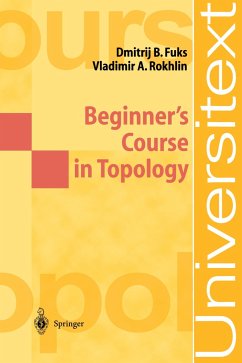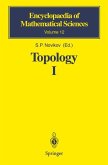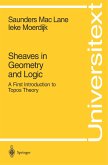Based on lectures given by the authors at Moscow and Leningrad Universities, this textbook gives a systematic exposition of the main parts of Topology: Homology, Homotopy, Fibre Bundles, and Smooth Manifolds.
The main purpose is to present all parts of topology as a unified whole. As a methodological innovation a coordinateless approach to the theory of fibre bundles and an exposition of the foundation of differerential topology without use of differential equations is presented.
Many descriptive examples and drawings are included; each section is followed by a set of well chosen exercises. The reader needs only a basic knowledge of set theory, algebra and calculus; so first-year graduate students will find a thorough an profound introduction into the advanced theory of Differential Manifolds.
This book is the result of reworking part of a rather lengthy course of lectures of which we delivered several versions at the Leningrad and Moscow Universities. In these lectures we presented an introduction to the fundamental topics of topology: homology theory, homotopy theory, theory of bundles, and topology of manifolds. The structure of the course was well determined by the guiding term elementary topology, whose main significance resides in the fact that it made us use a rather simple apparatus. tn this book we have retained {hose sections of the course where algebra plays a subordinate role. We plan to publish the more algebraic part of the lectures as a separate book. Reprocessing the lectures to produce the book resulted in the profits and losses inherent in such a situation: the rigour has increased to the detriment of the intuitiveness, the geometric descriptions have been replaced by formulas needing interpretations, etc. Nevertheless, it seems to us tha·t the book retains the main qualities of our lectures: their elementary, systematic, and pedagogical features. The preparation of the reader is assumed to be limi ted to the usual knowledge of set ·theory, algebra, and calculus which mathematics students should master after the first year and a half of studies. The exposition is accompanied by examples and exercises. We hope that the book can be used as a topology textbook.
The main purpose is to present all parts of topology as a unified whole. As a methodological innovation a coordinateless approach to the theory of fibre bundles and an exposition of the foundation of differerential topology without use of differential equations is presented.
Many descriptive examples and drawings are included; each section is followed by a set of well chosen exercises. The reader needs only a basic knowledge of set theory, algebra and calculus; so first-year graduate students will find a thorough an profound introduction into the advanced theory of Differential Manifolds.
This book is the result of reworking part of a rather lengthy course of lectures of which we delivered several versions at the Leningrad and Moscow Universities. In these lectures we presented an introduction to the fundamental topics of topology: homology theory, homotopy theory, theory of bundles, and topology of manifolds. The structure of the course was well determined by the guiding term elementary topology, whose main significance resides in the fact that it made us use a rather simple apparatus. tn this book we have retained {hose sections of the course where algebra plays a subordinate role. We plan to publish the more algebraic part of the lectures as a separate book. Reprocessing the lectures to produce the book resulted in the profits and losses inherent in such a situation: the rigour has increased to the detriment of the intuitiveness, the geometric descriptions have been replaced by formulas needing interpretations, etc. Nevertheless, it seems to us tha·t the book retains the main qualities of our lectures: their elementary, systematic, and pedagogical features. The preparation of the reader is assumed to be limi ted to the usual knowledge of set ·theory, algebra, and calculus which mathematics students should master after the first year and a half of studies. The exposition is accompanied by examples and exercises. We hope that the book can be used as a topology textbook.








